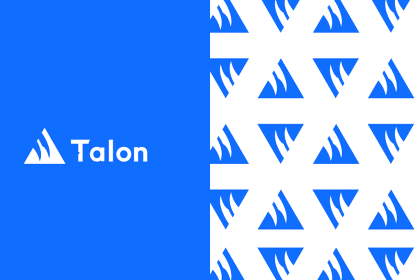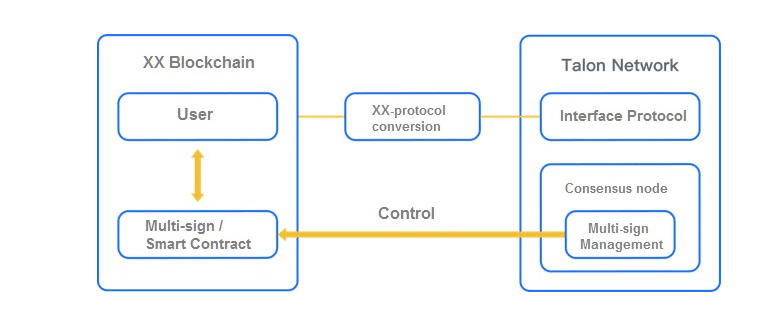High TPS+Low Gas Fees, Talon Network Brings a New Layer2 Experience

Since the second half of 2020, yield farming of DeFi has become the global trend. Years of development in the application layer of Ethereum network has brought developers, users, funds and other comprehensive advantages, which has contributed to a hundredfold increase in DeFi users and locked funds.
In 2021, with the influx of a large number of investors, the low transaction processing capacity of Ethereum network has become prominent, resulting in frequent network congestion and high gas fees. The transaction processing mechanism that prioritizes high gas fee transaction makes Ethereum network expensive and congested during the DeFi boom, and it became common for a single transaction to cost tens or hundreds of dollars. Such transaction costs severely limit the development of Ethereum ecosystem.
As a16z points out, scaling is necessary to support the rapid growth of Ethereum network. Facing the current problem of extremely limited scalability, Ethereum community has launched the first generation scale-up scheme Plasma or state channel. More and more DeFi projects begin to think about how to reduce the cost for users while taking into account DeFi’s compostability and security.
High TPS, Talon Network Brings A New Layer2 Experience
The problem of Ethereum is imminent at present, however, the development of Ethereum 2.0 sharding is slow. In the short term, the scale-up solution on Layer2 is most likely to change the current congestion status of Ethereum. The Layer2 world is also surging with many top development teams competing to enter. Current Layer2 technical solutions can be divided into several categories, such as state channels, side chains, Plasma, and Rollup.
The competitiveness of Layer2 lies in improving the user experience. Talon network, the Layer2 scale-up project of Ethereum, will be officially launched soon. Talon Network adopts the advanced design model of side chain + state channel to build the Ethereum Layer2 Network.
From the perspective of users, the current transaction processing capacity of Ethereum network is mainly limited by the block size and block time. On average, a block is generated every 12 seconds. Problems such as network congestion and high gas costs need to be addressed urgently.
High TPS: unlike other Layer2 solutions, Talon Network’s side chain uses Byzantine mechanisms to confirm each transaction. The block time is 2 seconds, and the TPS performance can reach 2000+ in a real usage environment.
High compostability: Talon Network not only supports Ethereum Network, but also supports Bitcoin, Polkadot and other multi-chain ecosystems through side chains.

Low Gas fees, TalonSwap Lowers DeFi User Threshold
Current early technical structure requires a lot of surrounding ecological infrastructure support. TalonSwap is the first product launched by Talon Network.
Due to the limitations of blockchain technology, as well as the long block time and confirmation time of the public chain itself, Dex, led by Uniswap, faces pain points such as low TPS, low processing capacity and high gas fees. These pain points also directly lead to the poor transaction experience of users, which leaves the Dex a lot to improve.
TalonSwap implements the transaction logic of Uniswap on Layer2 based on Talon Network, which means that all transactions are completed on Layer2. Compared to the gas fee of tens of dollars for each transaction on Uniswap (as the price of ETH increases) , the gas fee for each transaction on Layer2 on Talon Network is 0, which saves users a great deal of transaction costs.

Conclusion
The structural development direction of blockchain should be to keep Layer1 as static as possible, and to deploy innovative applications on Layer2, thus Layer1 and Layer2 shall complement each other.
In recent weeks, Polygon (previously Matic), the representative side chain solution of Layer2 has experienced explosive growth, with more than $8.9 billion in total value locked in. Several major Ethereum Layer1 applications, including Aave, Curve, Aavegotchi, and OpenSea, have chosen Polygon to scale their performance.
Similar to Polygon, Talon Network uses an advanced side chain + state channel design model to help upgrade the current Ethereum Network from narrow to wide lanes, allowing more people to use DeFi products, while also bringing Layer2 ecosystem new experiences.
Build the future with us!
Twitter, Discord, Medium, Github, Gitbook.
Disclaimer: This publication is sponsored. Coinspeaker does not endorse or assume responsibility for the content, accuracy, quality, advertising, products, or other materials on this web page. Readers are advised to conduct their own research before engaging with any company mentioned. Please note that the featured information is not intended as, and shall not be understood or construed as legal, tax, investment, financial, or other advice. Nothing contained on this web page constitutes a solicitation, recommendation, endorsement, or offer by Coinspeaker or any third party service provider to buy or sell any cryptoassets or other financial instruments. Crypto assets are a high-risk investment. You should consider whether you understand the possibility of losing money due to leverage. None of the material should be considered as investment advice. Coinspeaker shall not be held liable, directly or indirectly, for any damages or losses arising from the use or reliance on any content, goods, or services featured on this web page.